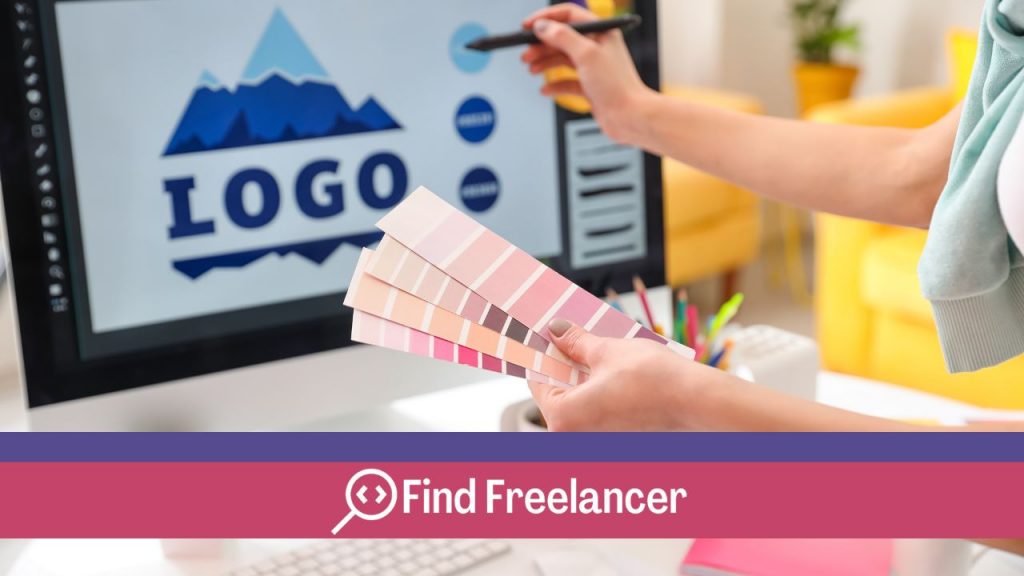Typeface logos, often called text logos, are distinguished by their use of typography as the primary design element. Unlike iconic logos, they depend entirely on the shape, color, and style of typography to represent a brand. This type of logo is appreciated for its simplicity and ability to communicate a clear message. However, it can sometimes lack visual distinction and require creative typography to stand out. In this article, we’ll explore the pros, cons and look at some inspiring examples of typographic logos.
Description of typographic logos
Typeface logos are distinguished by their creative use of typography as the main graphic element. Rather than relying on symbols or icons, these logos draw their strength from the shape, style and layout of the letters. They offer a visual simplicity that can be powerful, communicating a clear message and reinforcing a brand’s identity in a memorable way.
However, they can sometimes lack visual distinction and require original typography to stand out effectively. Typographic logos are suitable for a wide range of media and can be easily reproduced and adapted, making them a popular choice for many businesses.
Benefits of letterpress logos
The advantages are :
Simplicity and readability
Typeface logos are distinguished by their visual simplicity, making them easy for the public to understand and remember. Clear, well-chosen typography effectively conveys the brand’s message.
Ease of reproduction and adaptation
.
Using mainly typographic characters, these logos are easy to reproduce on different media and at different sizes, without losing their visual impact.
Adaptability to different media
Typographic logos easily adapt to the requirements of digital, print and other media, thanks to their simplicity and legibility, ensuring brand consistency across all channels.
Disadvantages of letterpress logos
These are :
Lack of visual distinction
Typographic logos can sometimes lack singularity and don’t stand out as easily as logos based on distinctive icons or symbols.
Dependence on strong typography
The success of a typographic logo depends largely on the choice of strong, memorable typography. If the typography chosen isn’t distinctive or relevant to the brand, the logo can lose its effectiveness.
Risk of confusion with other brands
.
Due to their simplicity, typographic logos can sometimes be confused with those of other brands using similar typography. This can lead to a loss of visibility and recognition for the brand concerned. This can lead to a loss of visibility and recognition for the brand concerned.Top of form
Bottom of form
Examples of famous typographic logos
Here are a few examples of famous typographic logos:
- Google: Uses colorful, playful typography to represent its brand, with occasional variations to celebrate special events.
- Coca-Cola: Uses a distinctive typography known as “Spencerian script”, creating a strong and recognizable visual identity.
- Disney: Uses stylized typography, often paired with a star over the “i”, adding a touch of whimsy and enchantment.
- Adidas: Uses simple, bold typography, perfectly suited to its sporty, dynamic brand image.
- Amazon: Uses simple typography with a smiling arrow, still symbolizing speed and’efficiency.
These examples show how well-chosen typography can strengthen a brand’s visual identity and recognition around the world.
Tips for creating an effective typographic logo
Here are a few tips for creating an effective typographic logo:
Choosing the right typography
Select typography that reflects your brand’s identity. Opt for a unique and memorable typeface, adapted to the tone and image you want to convey.
Integration of complementary symbols or graphics
To reinforce the visual impact of your logo, consider integrating symbols or graphics that complement the typography. Make sure they blend harmoniously and reinforce your brand message.
Considerations for legibility and impact
Make sure your logo is easily legible at different sizes and on different media. Avoid overly complex typography that could compromise legibility. Also make sure your logo has a strong visual impact and is easily recognizable.
By following these tips, you can create a typographic logo that not only effectively represents your brand, but also attracts your target audience’s attention and memorability.










